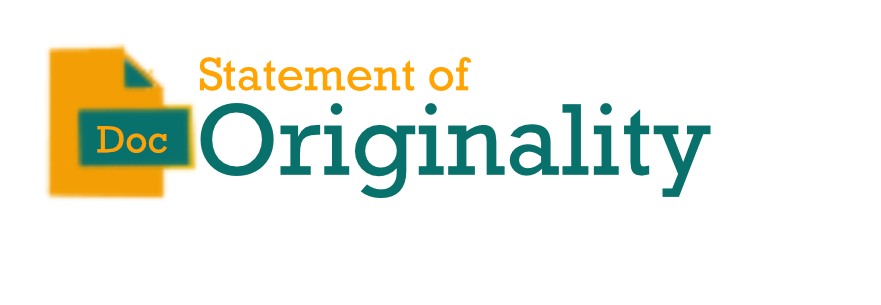Determinant of sharia rural bank profitability: Do size and location matter?
DOI:
https://doi.org/10.18326/muqtasid.v15i2.139-154Keywords:
bank fundamentals, size, location, return on assets, sharia rural bankAbstract
This research analyzes the influence of bank fundamentals, bank size, location, and macroeconomic variables on the profitability of Sharia Rural Banks (SRBs) in Indonesia. Our study investigates 90 banks located on the island of Java. The research period is 2018-2021, using quarterly data. The dynamic panel regression is employed with a GMM method. The findings indicate that strong bank fundamentals, as indicated by large assets, high CAR, and high efficiency, have a positive effect on profitability. There are two other interesting findings in this study. First, large SRBs encourage high profitability. Second, locations with high economic growth and high religiosity foster profitability. Some policy implications can be drawn from our findings. First, SRB must have sufficient capital and a high level of efficiency to increase profitability. Second, a large SRB is the best choice for an SRB to have sound financial performance. Third, SBRs must intensively introduce Sharia banking products to the public to increase their performance because religiosity is an important factor in determining profitability.
References
Al Iqbal, M. H., & Budiyanto, I. (2020). Analisis pengaruh kewajiban penyediaan modal minimum (KPMM), beban operasional pendapatan operasional (BOPO), financing to deposit ratio (FDR), dan inflasi terhadap return on asset (ROA) pada bank umum Syariah di Indonesia periode 2016-2019. Malia: Journal of Islamic Banking and Finance, 4(1), 1–11. https://doi.org/10.21043/malia.v4i1.6887.
Alabbad, A., & Schertler, A. (2022). COVID-19 and bank performance in dual-banking countries: An empirical analysis. Journal of Business Economics, 92(9), 1511–1557. https://doi.org/10.1007/s11573-022-01093-w.
Almunawwaroh, M., & Marliana, R. (2018). Pengaruh CAR, NPF dan FDR terhadap profitabilitas bank Syariah di Indonesia. Amwaluna: Jurnal Ekonomi dan Keuangan Syariah, 2(1), 1–18. https://doi.org/10.29313/amwaluna.v2i1.3156.
Arellano, M., & Bond, S. (1991). Some tests of specification for panel data: Monte Carlo evidence and an application to employment equations. The Review of Economic Studies, 58(2), 277–279. https://doi.org/10.2307/2297968.
Arellano, M., & Bover, O. (1995). Another look at the instrumental variable estimation of error-components models. Journal of Econometrics, 68(1), 29–51. https://doi.org/10.1016/0304-076(94)01642-D.
Blundell, R., & Bond, S. (1998). Initial conditions and moment restrictions in dynamic panel data models. Journal of Econometrics, 87(1), 115–143. https://doi.org/10.1016/S0304-4076(98)00009-8.
El-Chaarani, H. (2023). the Impact of Covid-19 on the performance of Islamic banks in the Mena region. ISRA International Journal of Islamic Finance, 15(1), 109–129. https://doi.org/10.55188/ijif.v15i1.488.
Fatmawati, N. L., & Hakim, A. (2020). Analisis tingkat profitabilitas perbankan Syariah di Indonesia. Jurnal Baabu Al-Ilmi: Ekonomi dan Perbankan Syariah, 5(1), 1–15. https://doi.org/10.29300/ba.v5i1.3115.
Fitriyah, N. L., & Sholikhin, M. Y. (2019). Faktor penentu profitabilitas BPRS di Indonesia. Jurnal Ilmiah Ekonomi Islam, 5(3), 173–180. https://doi.org/10.29040/jiei.v5i3.528.
Hidayah, N., & Karimah, N. A. (2023). Are Sharia financing schemes profitable? The case of Islamic rural banks in Indonesia. El Dinar: Jurnal Keuangan dan Perbankan Syariah, 11(1), 58–76. https://doi.org/10.18860/ed.v11i1.19561.
Ibrahim, M. H., Aun, S., & Rizvi, R. (2017). Do we need bigger Islamic banks? An assessment of bank stability. Journal of Multinational Financial Management, 40, 77–91. https://doi.org/10.1016/j.mulfin.2017.05.002.
Khattak, M. A., Ali, M., Khan, N. A., & Ahmad, F. (2022). The adjusted market power, competition, and performance: Islamic Vs Conventional banks. Journal of Islamic Monetary Economics and Finance, 8(4), 577–598. https://doi.org/10.21098/jimf.v8i4.1532.
Ningsih, W., Badina, T., & Rosiana, R. (2017). Pengaruh permodalan, kualitas asset, rentabilitas dan likuiditas terhadap profitabilitas bank pembiayaan rakyat syariah (BPRS) di Indonesia. Akuntabilitas, 10(1), 181–192. https://doi.org/10.15408/akt.v10i1.6116.
Putri, D. W. E. P., & Widarjono, A. (2023). Effect of stability and funding risk on Sharia rural bank’s profitability. Jurnal Ekonomi Syariah Teori dan Terapan, 10(6), 620–631. https://doi.org/10.20473/vol10iss20236pp620-631.
Risfandy, T. (2018). Equity financing and Islamic banks’ profitability: Evidence from the biggest muslim country. Jurnal Keuangan dan Perbankan, 22(3), 496–505. https://doi.org/10.26905/jkdp.v22i3.2150.
Risfandy, T., & Pratiwi, D. I. (2022). The performance of Indonesian Islamic rural banks during Covid-19 outbreak: The role of diversification. Journal of Islamic Monetary Economics and Finance, 8(3), 455–470. https://doi.org/10.21098/jimf.v8i3.1564.
Roy, M. I. (2017). Analisis pertumbuhan pembiayaan UMKM terhadap pertumbuhan laba bersih BPRS di Indonesia. Islamiconomics: Jurnal Ekonomi Islam, 8(1), 47–58. https://doi.org/10.32678/ijei.v8i1.62.
Šeho, M., Ibrahim, M. H., & Mirakhor, A. (2021). Does sectoral diversification of loans and financing improve bank returns and risk in dual-banking systems? . Pacific Basin Finance Journal, 68, 1–26. https://doi.org/10.1016/j.pacfin.2021.101619.
Sudarsono, H., Afriadi, F., & Suciningtias, S. A. (2021). Do stability and size affect the profitability of Islamic rural bank in Indonesia? Jurnal Ekonomi & Keuangan Islam, 7(2), 161–174. https://doi.org/10.20885/jeki.vol7.iss2.art5.
Sutrisno, S., & Widarjono, A. (2022). Is profit – loss - sharing financing matter for Islamic bank’s profitability? The Indonesian case. Risks, 10(11), 1–13. https://doi.org/https://doi.org/10.3390/risks10110207.
Sutrisno, S., & Widarjono, A. (2024). Determinants of capital buffer in Islamic banks: The lesson from Indonesia. Cogent Business & Management, 11(1), 1-15. https://doi.org/10.1080/23311975.2024.2331707.
Sutrisno, S., Widarjono, A., & Mohamad, M. (2023). Does financing diversification improve bank risk? Evidence from Indonesian Islamic rural banks. International Journal of Economics and Finance Studies, 15(4), 103–124. https://doi.org/10.34109/ijefs.202315406.
Trinugroho, I., Risfandy, T., Ariefianto, M. D., Prabowo, M. A., Purnomo, H., & Purwaningsih, Y. (2017). Does religiosity matter for Islamic banks’ performance? Evidence from Indonesia. International Journal of Economics and Management, 11(2), 419–435.
Wasiaturrahma., Sukmana, R., Ajija, S. R., Salama, S. C. U., & Hudaifah, A. (2020). Financial performance of rural banks in Indonesia: A two-stage DEA approach. Heliyon, 6(February), e04390. https://doi.org/10.1016/j.heliyon.2020.e04390.
Widarjono, A., & Anto, M. B. H. (2020). Does market structure matter for Islamic rural banks’ profitability? Jurnal Keuangan dan Perbankan, 24(4), 393–406. https://doi.org/10.26905/jkdp.v24i4.4810.
Widarjono, A., Anto, M. B. H., & Fakhrunnas, F. (2020b). Financing risk in Indonesian Islamic rural banks: Do financing products matter? The Journal of Asian Finance, Economics and Business, 7(9), 305–314. https://doi.org/10.13106/jafeb.2020.vol7.no9.305.
Widarjono, A., Mifrahi, M. N., & Perdana, A. R. A. (2020a). Determinants of Indonesian Islamic rural banks’ profitability: Collusive or non-Collusive behavior? Journal of Asian Finance, Economics and Business, 7(11), 657–668. https://doi.org/10.13106/jafeb.2020.vol7.no11.657.
Widarjono, A., & Misanam, M. (2024). Determinants of bank capital in Indonesian Islamic banks. Shirkah: Journal of Economics and Business, 9(3), 229–241. https://doi.org/10.22515/shirkah.v9i3.592.
Widarjono, A., Suseno, P., Safitri, D. U. R., Yaseen, A., Azra, K., & Hidayah, I. N. (2023). Islamic bank margins in Indonesia: The role of market power and bank-specific variables. Cogent Business & Management, 10(2), 1–17. https://doi.org/10.1080/23311975.2023.2202028.
Yanikkaya, H., Gümüş, N., & Pabuçcu, Y. U. (2018). How profitability differs between conventional and Islamic banks: A dynamic panel data approach. Pacific Basin Finance Journal, 48(February), 99–111. https://doi.org/10.1016/j.pacfin.2018.01.006.
Yusuf, M. (2017). Dampak indikator rasio keuangan terhadap profitabilitas bank umum Syariah di Indonesia. Jurnal Keuangan dan Perbankan, 13(2), 141-151. https://doi.org/10.35384/jkp.v13i2.53.
Downloads
Published
How to Cite
Issue
Section
License
Copyright (c) 2025 Agus Widarjono

This work is licensed under a Creative Commons Attribution-ShareAlike 4.0 International License.







